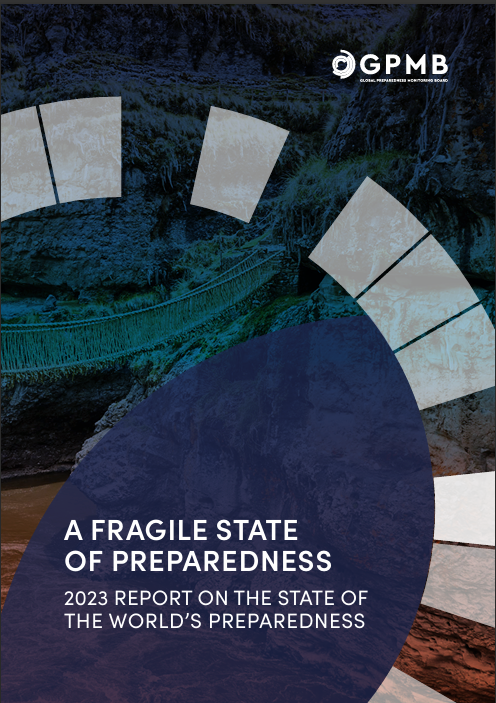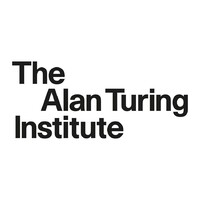Analyzes global readiness for pandemics and other health emergencies. Utilizing the GPMB Monitoring Framework for the first time, it concludes that global preparedness remains inadequate and fragile despite some enhancements after the COVID-19 pandemic. It underscores crucial issues such as the diminishing capacities in vital preparedness sectors and the necessity for increased political commitment and resources. State of the World’s Preparedness: GPMB 2023 Annual Report.
Key Findings:
- Inadequate Preparedness: Highlights significant weaknesses in global preparedness, with some areas showing fragile improvements and others experiencing declines.
- Urgent Recommendations: The GPMB makes four key recommendations to strengthen global preparedness:
- Strengthen independent and multisectoral monitoring and accountability.
- Reform the global financing system for pandemic prevention, preparedness, and response (PPPR).
- Achieve more equitable and robust research and development (R&D) and supply chains.
- Enhance multisectoral, multistakeholder engagement.
- Trust Deficit: A significant obstacle to preparedness is the lack of trust at various levels between countries. Building trust through equity, leadership, accountability, and coherence in all PPPR measures is necessary.
- Financing Needs: Stresses the need for sustainable financing for WHO and other international organizations working on PPPR. It highlights the importance of the Pandemic Fund and calls for its full financing to meet the identified US$10 billion need.
- Regional Capacities: Strengthening regional capacities for R&D, manufacturing, and supply is essential to address global inequities in access to medical countermeasures.
Overview
2. Executive Summary
Highlights the urgent need for improved pandemic readiness due to the COVID-19 crisis. It discusses the world’s vulnerability to future pandemics due to insufficient action and unity. It references the GPMB’s Preparedness Manifesto and the UN’s political declaration on increased readiness, signaling the need for ambitious plans. The slow progress of the WHO Pandemic Agreement and inadequate global preparedness areas, such as funding, R&D coordination, misinformation management, and inclusive prevention and response, are also mentioned. It ends by stressing the need to fix key global readiness issues and the risk of complacency.
3. Context: a more challenging environment for preparedness
Discusses the aftermath of the COVID-19 pandemic and the urgent need for improved global preparedness and response to pandemics. Unified action and urgency are a global deficiency despite the acknowledged need for enhanced readiness. Underscores a decline in momentum and commitment when needed, leaving the world vulnerable to future pandemics.
The Global Preparedness Monitoring Board (GPMB) released a Manifesto for Preparedness and a reform checklist, hoping for a UN meeting to focus on pandemic prevention and response. Despite a positive declaration from the UN General Assembly in 2023, it didn’t fulfill GPMB’s ambitious agenda. The focus is now on a WHO convention or agreement to enhance global preparedness.
Indicates that COVID-19 response is now a standard part of health measures, leading to complacency. Slow negotiations for a WHO Pandemic Agreement and differences in key areas hinder global readiness improvement. It emphasizes the need for continuous efforts to negotiate a mandatory pandemic prevention framework, secure funding, boost research capabilities, and improve coordination across readiness and response sectors.
4 State of the world’s preparedness
Underscores the interconnectedness of preparedness, risk, and impact, exemplified by the COVID-19 pandemic. It introduces the GPMB Monitoring Framework for evaluating global health emergency risks, impacts, and PPPR abilities. This framework, which focuses on 30 key indicators, was first used in global preparedness efforts in 2023.
Determines key preparedness gaps and calls for immediate action, focusing on monitoring, funding, governance, research, inclusivity, One Health approaches, and multisectoral coordination. It emphasizes aligning preparedness with the Sustainable Development Goals (SDGs) to address shared shortcomings.
Furthermore, it identifies four key priorities for strengthening global preparedness: enhancing monitoring and accountability, reforming the global financing system for PPPR, improving research and development capacities and supply chains, and enhancing multisectoral and multistakeholder engagement. By addressing these priorities and implementing the recommended actions, leaders at all levels can help build a more resilient world, ready to respond effectively to future health emergencies.
5 Moving ahead: recommendations for action
Outlines suggestions for enhancing global efforts to prepare and respond to pandemics. It highlights the necessity of all institutions making concrete, time-sensitive commitments to preventing, preparing for, and responding to health emergencies. It warns that postponing action may increase the world’s vulnerability to pandemic risks, reinforcing the urgency of executing these recommendations.
The recommendations highlight the necessity of a joint effort to create a PPPR framework supported by international law, ensuring state commitment. They underline the importance of fundraising from the public and private sectors based on their capabilities, allowing flexible resource allocation. Emphasis is also given to developing lasting research capacities to bridge the access gap and enhancing coordination across all sectors involved in PPPR.
Equity, a crucial part of global readiness, involves equal resource access and protection for all. Global security relies on valuing everyone and providing equitable resource access. Emphasizes the urgency of a collective approach to implement its recommendations, enhancing readiness and responses to future health crises.
6 Conclusions and next steps
Stresses the necessity for immediate, resolute action to strengthen global pandemic preparedness and response. It highlights the consequences of inaction and the urgency of implementing its recommendations. It calls for specific, time-bound commitments from everyone involved in pandemic prevention, preparedness, and response to efficiently address the gaps in readiness. Warns that the advancements made during the COVID-19 response will swiftly vanish without proactive measures to improve global preparedness.
Emphasizes the need for immediate action on its recommendations to mitigate future pandemic risks. It stresses the importance of trust, equity, leadership, and consistent efforts in pandemic prevention and response. It concludes by highlighting the world’s ongoing vulnerability to pandemics and the imperative to address the shortcomings in the global preparedness system to reduce future health emergencies.
State of the World’s Preparedness: GPMB 2023 Annual Report. State of the World’s Preparedness: GPMB 2023 Annual Report.




